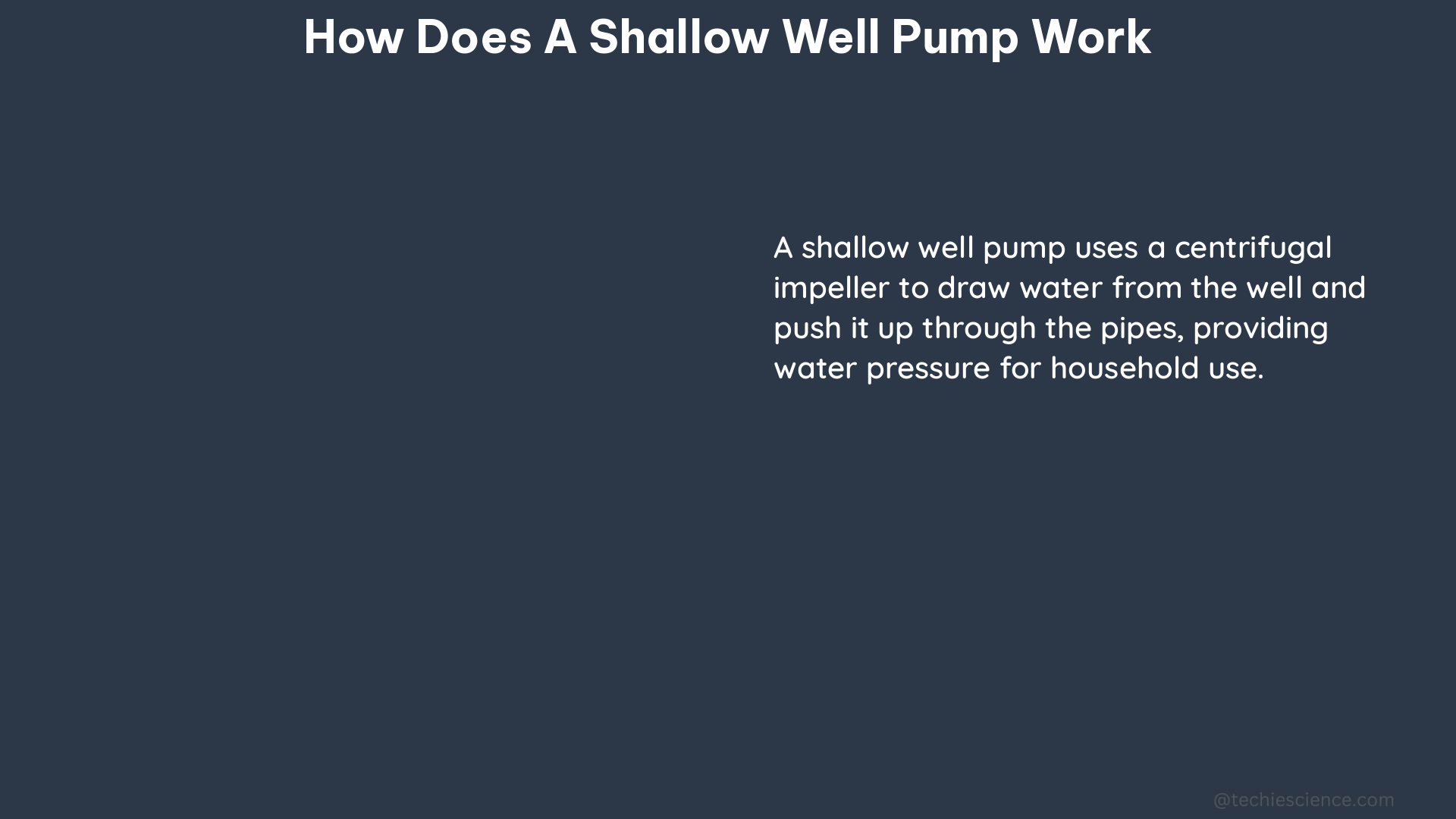Shallow well pumps are a crucial component in residential and agricultural water supply systems, designed to extract water from wells with depths up to 25 feet. These pumps operate on the jet pump principle, utilizing a motor, a centrifugal pump, and an ejector assembly to efficiently draw and deliver water to the surface. This comprehensive guide delves into the intricate workings of a shallow well pump, providing technical specifications and a step-by-step DIY installation process.
Understanding the Jet Pump Principle
The heart of a shallow well pump’s operation lies in the jet pump principle. This system consists of three main components:
- Motor: The electric or gas-powered motor provides the driving force to the pump.
- Centrifugal Pump: The impeller within the centrifugal pump creates a centrifugal force, drawing water into the pump.
- Ejector Assembly: The ejector assembly mixes the incoming water with high-pressure air, creating a venturi effect that further accelerates the water flow.
As the motor spins the impeller, it generates a centrifugal force that pulls water from the well through the suction pipe. The water then passes through the ejector assembly, where it is combined with high-pressure air. This air-water mixture is discharged through a narrow nozzle, creating a venturi effect that boosts the water’s velocity. The accelerated water then returns to the pump, where it is lifted to the surface and delivered through the discharge pipe.
Technical Specifications of Shallow Well Pumps

Shallow well pumps are designed with specific technical parameters to ensure optimal performance and compatibility with various water supply systems. Let’s explore the key technical specifications:
Power Source:
– Shallow well pumps are typically powered by electricity, with voltage ratings ranging from 110V to 240V.
– Some models may also be powered by gas or diesel engines, providing an alternative power source for remote or off-grid applications.
Flow Rate:
– The flow rate of a shallow well pump can vary depending on the model, but it is typically in the range of 5 to 25 gallons per minute (GPM).
– The flow rate is influenced by factors such as the pump’s horsepower, the well’s depth, and the system’s overall resistance.
Suction Lift:
– The maximum suction lift for a shallow well pump is usually around 25 feet.
– This means the pump can effectively draw water from a well with a depth of up to 25 feet below the pump’s installation location.
Horsepower:
– Shallow well pumps are available in various horsepower ratings, typically ranging from 1/2 to 3 HP.
– The required horsepower depends on the pump’s flow rate, the well’s depth, and the system’s water demand.
Voltage:
– Shallow well pumps are available in various voltage ratings, including 110V, 220V, and 240V.
– The appropriate voltage selection depends on the available power source and the pump’s power requirements.
DIY Installation Guide for Shallow Well Pumps
Installing a shallow well pump can be a straightforward process for a competent DIYer. Here’s a step-by-step guide to help you through the installation:
- Select a Suitable Location:
- Choose a level, stable surface close to the well and the power source.
-
Ensure the location provides easy access for maintenance and servicing.
-
Install the Suction and Discharge Pipes:
- The suction pipe should be installed in the well, with the intake end positioned below the water level.
- The discharge pipe should be connected between the pump and the pressure tank or household plumbing system.
-
Use appropriate pipe materials and fittings to ensure a secure and leak-free connection.
-
Connect the Pump to the Power Source:
- Refer to the manufacturer’s instructions to properly connect the pump to the power source, whether it’s an electrical outlet or a gas/diesel power supply.
-
Ensure the power connection is safe, secure, and complies with local electrical codes.
-
Start the Pump and Test the System:
- Once the pump is connected to the power source, start the pump and observe its operation.
- Check for any leaks or unusual noises, and ensure the pump is delivering water to the pressure tank or household plumbing system.
- Perform any necessary adjustments or troubleshooting to optimize the pump’s performance.
Remember to always prioritize safety during the installation process and follow the manufacturer’s guidelines closely to ensure the proper and efficient operation of your shallow well pump.
References
- How Does a Shallow Well Pump Work with a Pressure Tank?
- Understanding How a Well Pump Works
- USGS Technical Manual: Groundwater and Seepage
- How Does a Well Pump Work?
- Guidance Needed for Shallow Well Set Up

The lambdageeks.com Core SME Team is a group of experienced subject matter experts from diverse scientific and technical fields including Physics, Chemistry, Technology,Electronics & Electrical Engineering, Automotive, Mechanical Engineering. Our team collaborates to create high-quality, well-researched articles on a wide range of science and technology topics for the lambdageeks.com website.
All Our Senior SME are having more than 7 Years of experience in the respective fields . They are either Working Industry Professionals or assocaited With different Universities. Refer Our Authors Page to get to know About our Core SMEs.